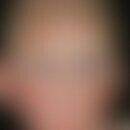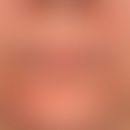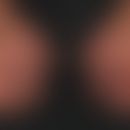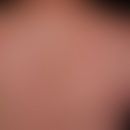DefinitionThis section has been translated automatically.
Mascara is a cosmetic product for tinting and visually emphasizing the lashes. The eye-catching effect of mascara is due to the fact that the natural lashes become thinner and lighter towards the tip, thus becoming lighter. They thus appear shorter than they really are. By tinting the lashes, they are visible along their entire length. Furthermore, the extra layer of colour on the lashes ensures that the lashes become thicker and therefore appear stronger. Sometimes mascara also contains artificial silk or nylon fibres, so that the optical effect is accompanied by an actual lengthening of the lashes. Mascara belongs to the cosmetic products. Together with eye shadow and eyeliner products, they form the product segment of eye cosmetics. Many users prefer waterproof mascara.
Side effects of mascara applications include allergic reactions (see also eyelid eczema), mechanical injuries of the eye apparatus due to careless application, foreign body deposits in the conjunctiva and cornea.
General informationThis section has been translated automatically.
Common ingredients of mascara:
Almost all mascara products contain polycyclic aromatic hydrocarbons (PAHs) such as aliphatic alcohols, aminomethyl propanol and aminomethyl propanediol which may be used for pH adjustment (concentrations <10%).
Furthermore paraffins and silicones.
PEG derivatives propyl paraben, diethyl phthalate mascara
also contain different amounts of metal salts: the allergologically or toxically unsuspicious iron oxide as well as (different manufacturers) nickel, cobalt and chromium salts in allergologically relevant concentrations. However, nickel sensitization does not seem to play a major role in eyelid eczema. A Danish study on a larger collective showed no differences in the frequency of sensitization compared to a control group.
Geraniol, citral, citronellol and farnesol are used as odour correctives.
In addition, various odour correctives contain Mascra contains halogen organic compounds such as: chlorphenesine, iodopropynyl butylcarbamate.
The most common cosmetic accident is a slipping of the mascara brush. This can lead to corneal injuries, which can be filled with ink. Corneal ulcers can occur complicatively. It is recommended to rinse the eye immediately with physiological saline solution and to consult an ophthalmologist immediately. If mascara is used for many years, pigments can accumulate in the conjunctiva. Less frequently, the flow of tears can be hindered by pigment deposits, which can lead to sicca symptoms.
Contact lens wearers have the problem that ink particles get under the contact lens and lead to a painful foreign body sensation.
LiteratureThis section has been translated automatically.
- Chowdhury MM (2002) Allergic contact dermatitis from prime yellow carnauba wax and coathylene in mascara. Contact Dermatitis 46:244.
- Gallo R et al (2005) Allergic contact dermatitis from shellac in mascara. Contact dermatitis 53:238.
- Karlberg AT et al (1991) Colophony in mascara as a cause of eyelid dermatitis. Chemical analyses and patch testing. Acta Derm Venereol 71:445-447.
- Saxena M et al (2001) Eyelid allergic contact dermatitis to black iron oxide. Am J Contact Dermat 12:38-39.
- Sipahi H et al (2015) Risk assessment of allergenic metals in cosmetic products. J Cosmet Sci 66:313-323.
- Wachsmuth R et al (2006) Loss of eyelashes after use of a tinting mascara containing PPD. Contact dermatitis 54:169-170.



